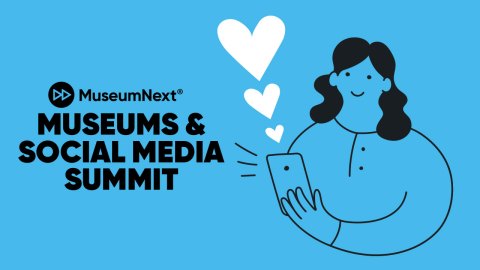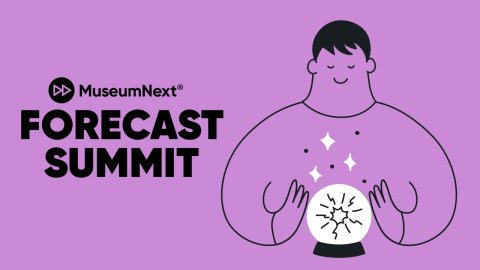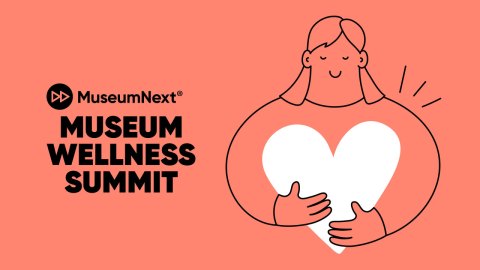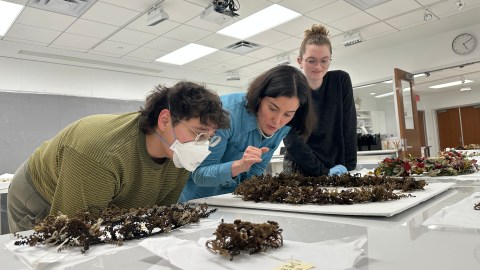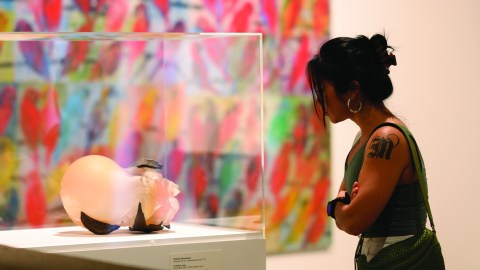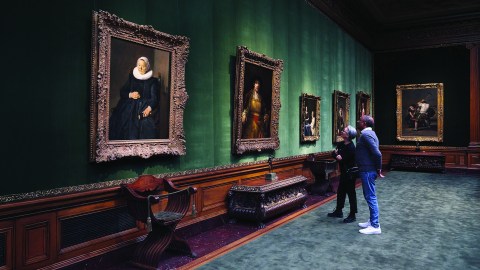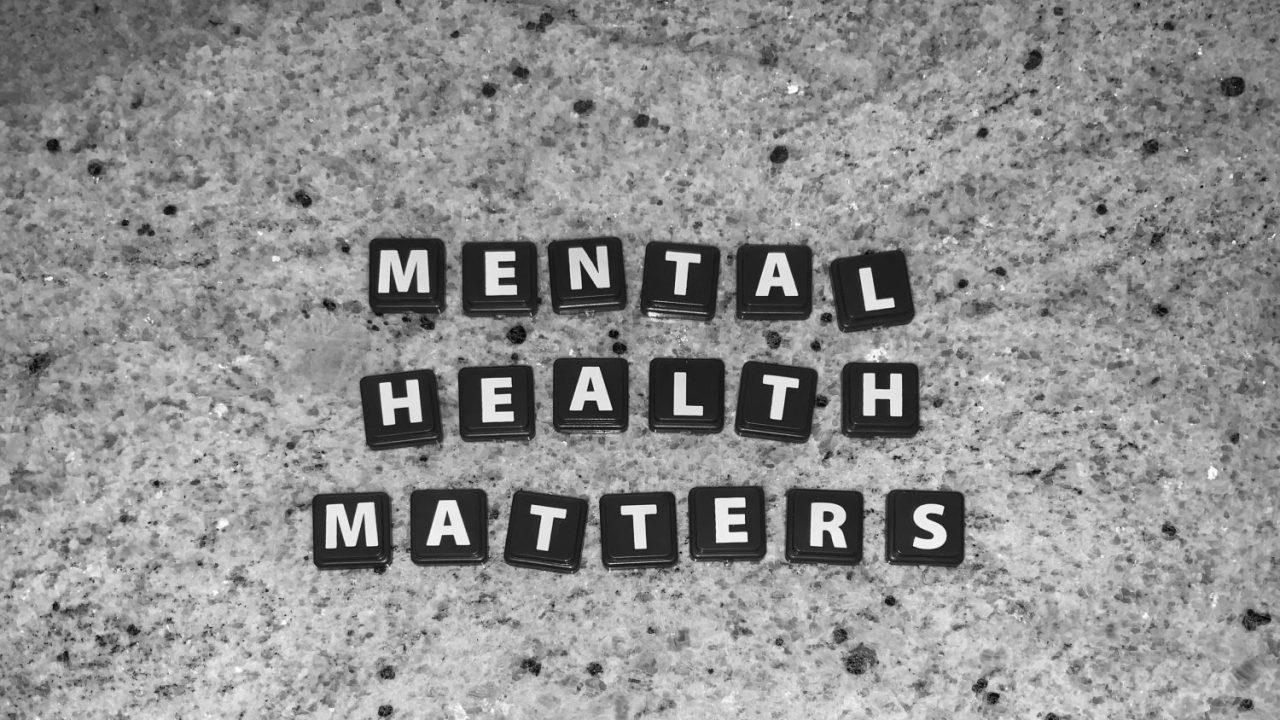
The American Alliance of Museums offers the following guidance from Ann Fortescue, Executive Director, International Museum of Art & Science. It is adapted from a blog post and subsequent roundtable discussion she led on the topic at the 2023 AAM Annual Meeting & MuseumExpo. She wishes to thank the participants in that discussion for helping to shape this tipsheet with their insights and wisdom.
When facing a contentious topic that requires a change in practice or behavior, like addressing the mental health of museum staff, we can often feel immobilized or stuck. What if we do something that has unexpected outcomes, or even makes the situation worse?
To help you navigate these fears and move toward positive action, this tipsheet offers small-step suggestions for collaborating with museum staff to increase their overall wellbeing in the workplace.
While these general suggestions are likely to be a good start for most institutions, they are not one-size-fits-all. Any staff mental health initiative should start from open dialogue with the staff themselves, asking them what actions they believe would be beneficial.
Here are some actions you might consider:
Making Time
Some of the smallest actions need only the resources of time and advance planning. For example:
- Close the museum for a day or a week to allow staff to unplug and recharge. (This is different from vacation time because everyone is out of the museum at the same time, and no one is expected to check in for the duration.)
- Schedule a “Quiet Week” at the museum when no internal or external meetings occur so staff are as unscheduled as possible. Evidence suggests that routinely scheduling these weeks a couple of times throughout the year creates bursts of productivity and calming effects from a sense of accomplishment.
- Consider how you can accommodate various work styles while maintaining work performance. Flexible work schedules and remote work can alleviate stress, especially when commuting is time-consuming. Some people flourish working at the museum, while others may not.
- Budget for wellness by designating annual funding for wellness activities, like improvements to staff workspaces (e.g., renovating the breakroom, organizing staff field trips), small acts of attention (e.g., birthday cards, breakfast at all-staff meetings), or a social fund for each department to provide wellness on a department level (which recognizes that not all staff can participate in all-staff meetings or activities due to the nature of their museum work, personal life, etc.).
- Invite museum staff across departments and levels to participate in proposing, planning, and implementing wellness activities.
- If you are an executive director or in another senior leadership position, lead by example by respecting non-work time so staff can rest, refresh, and recharge. Use the “time send” function on emails to preserve non-work time and minimize work creeping into private time.
Managing Change
While supporting mental health is always important, it’s especially crucial during periods of change for your museum, which can create added anxiety for staff. The best way to support staff during these periods is with clear, frequent communication. Here are some tips to promote that:
- Confront changes that cause anxiety from uncertainty, even when an answer isn’t immediately available. Acknowledge the situation to let staff know you are aware and acting and, if possible or appropriate, provide an outlet for them to share their concerns.
- Repeat important communications more than once, and let staff know you are keeping them up to date with as much information as you can share.
- Acknowledge shortcomings, such as staff shortages, even if you are not able to do anything right away. (This helps create a trusting environment by expressing empathy.)
- Avoid ambiguity in communications, which can cause more confusion and distrust than candor. Don’t be afraid to say, “I don’t know but I’m doing my best to find out.”
- Create an all-staff idea board or other mechanism for staff to freely share without fear of reprisal or criticism their opinions, ideas, and solutions for making the museum workplace better.
- When discussing sensitive topics, use sticky notes to gather feedback so that staff can contribute candidly and anonymously.
Establishing Expectations
Another way to support wellbeing is by reducing ambiguities about how the museum operates and what is expected of staff, so that your team feels aligned in working practices and aware of policies. Here are some ways to successfully establish expectations:
- Review your process for posting paid and unpaid job opportunities and the language you use to describe expectations. For feedback in the process, ask a newly hired employee what was clear and where there was room for improvement.
- Increase understanding of museum workers’ roles and responsibilities by sharing job descriptions across the museum so everyone has access to what is expected of each position. Consider going a step further by having staff shadow across other departments, as many museums do with interns.
- Put together a cross-departmental task force to audit the employee handbook. Are workplace expectations clear and do employees know what local, state, and federal laws they derive from?
- Identify the staff person who manages human resources and what their role and responsibilities are and share this job profile in an all-staff meeting or communication channel. This will reduce confusion about who addresses conflict resolution, challenging personnel issues, or personal situations.
- Share staff options for accessing confidential referrals to mental health professionals. Larger museums may have an Employee Assistance Program (EAP) for this, while smaller museums may need to reach out to a community partner for guidance on accessing these kinds of services. (e.g., a county health department, United Way for agency referrals, etc.).
- Be alert to generational and cultural differences regarding working and nonworking time, and include a diverse range of staff when reviewing employment policies and procedures to increase awareness, clear communications, and shared expectations.
Building Relationships
Creating experiences and caring for collections is at the core of museum work, and building relationships among museum staff is essential for success and sustainability. Here are some ways you can promote better relationships among staff:
- Make time for mentoring. We learn so much through museum experience that we can forget how important on-the-job coaching and training are. Share an article or blog post related to a current project or exhibit and ask a staff member to give a reflection in an all-staff meeting or communication channel. Encourage staff to find news stories about museums and share their perspectives on what they learned. Encouraging resourcefulness, collaboration, and communications across museum staff and departments builds camaraderie.
- Instead of creating a culture of fear around failure, encourage staff to be open about missteps and examine how they can use them to improve practices. Bravely sharing what did not go well with coworkers builds trust and respect.
- Have candid conversations about your museum’s work culture and the non-profit work culture in general. The mission-focused work of non-profits can foster a sense of continuous work that leads to burnout or disaffection.
- Reduce feelings of isolation or the sense you are the only one experiencing a challenging situation by making time to connect with peers. There are now many virtual meetings for professional networking, so even those who work in geographically remote museums can find ways to connect.
Suggested Resources
Making Time
Seema Rao’s Alliance Blog post with three tips for reexamining how you allocate your time:
Managing Communications
A Harvard Business Review article that poses some useful questions about communicating through change: https://hbr.org/2017/06/how-to-communicate-clearly-during-organizational-change
Establishing Expectations
For mental health providers, consult local and county health departments and social service agencies if your museum does not have an Employee Assistance Program (EAP). EAPs are often included in health insurance plans.
Building Relationships
Michael E. Shapiro captures advice and insights from museum directors in this Museum magazine article:
Reach out to your state and/or regional museum associations for opportunities to network with peers.

